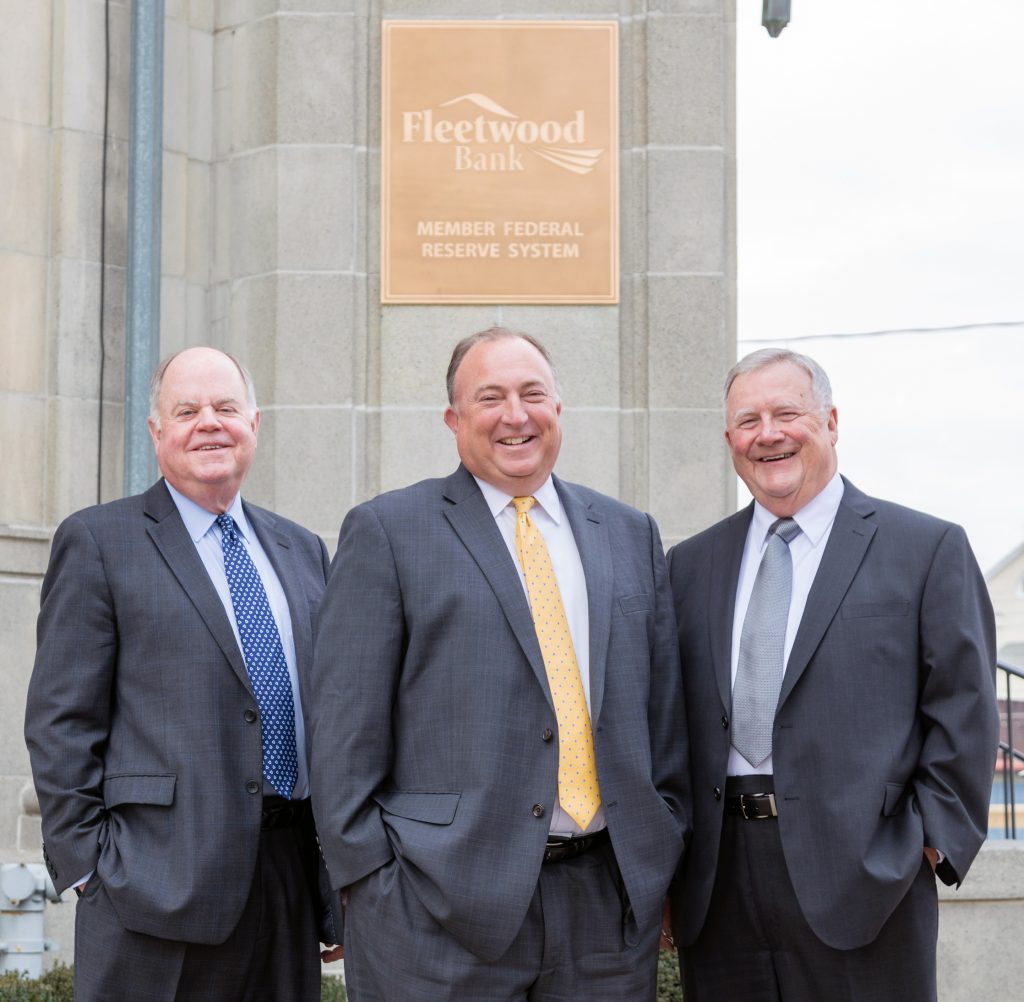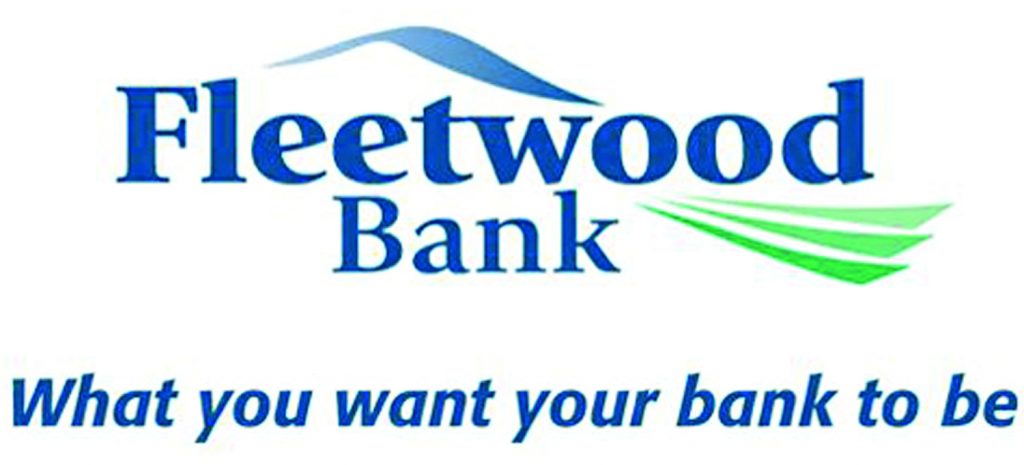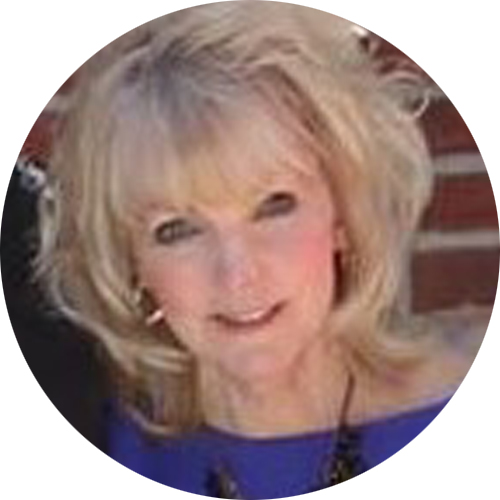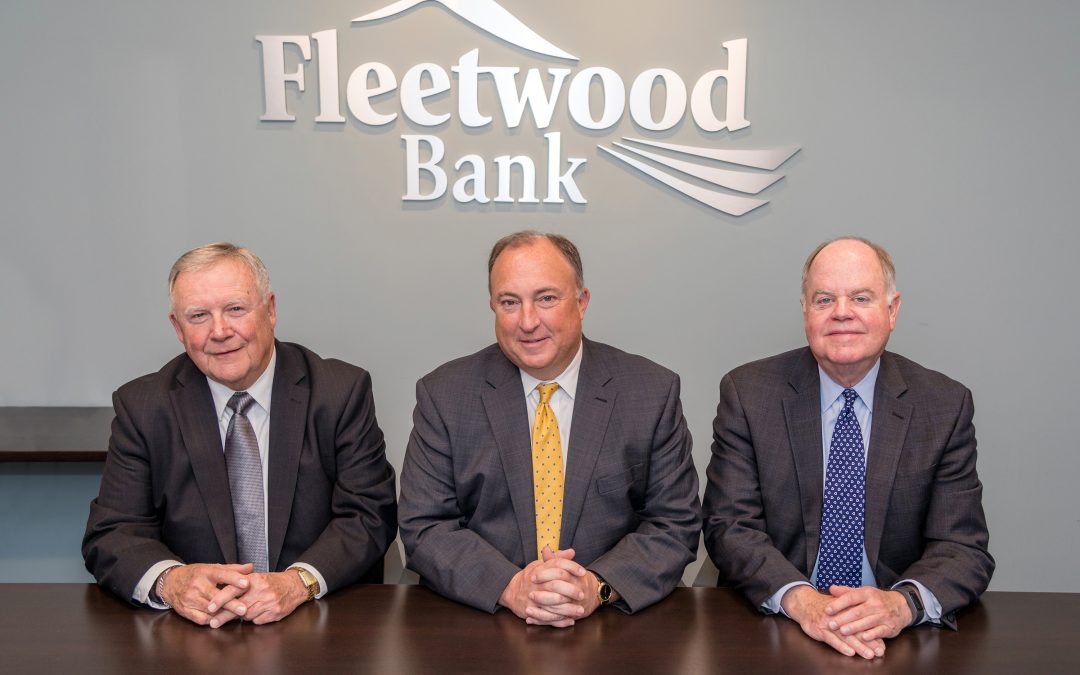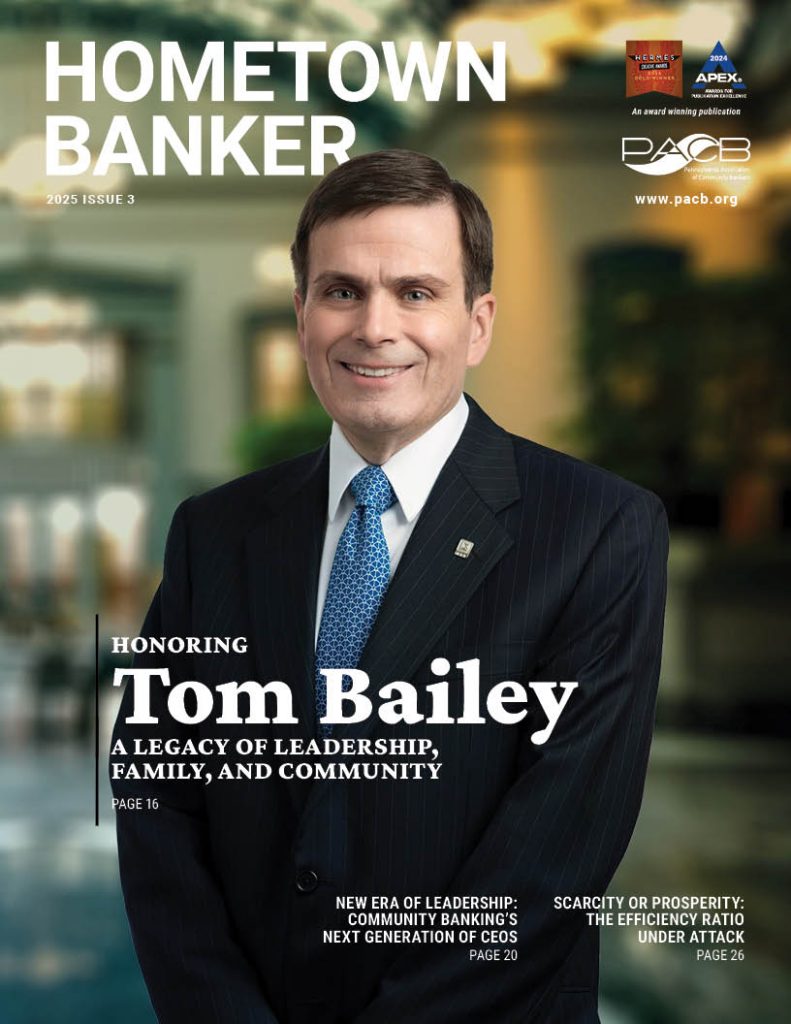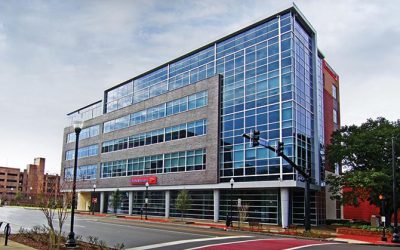By: Diane McNaughton
Great presidents shape, and are shaped by, the times.
Through the years, Pennsylvania’s community bank presidents have been thrust into a larger universe of economic, political and social tumult and have often emerged as the steadying hand for customers and the community.
In both lean times and booms, they have frequently led communitywide celebrations and helped inspire the reasons behind them. They have played a starring role in building homes, businesses, human capital, town festivals, art, wealth, and a strong social service safety net.
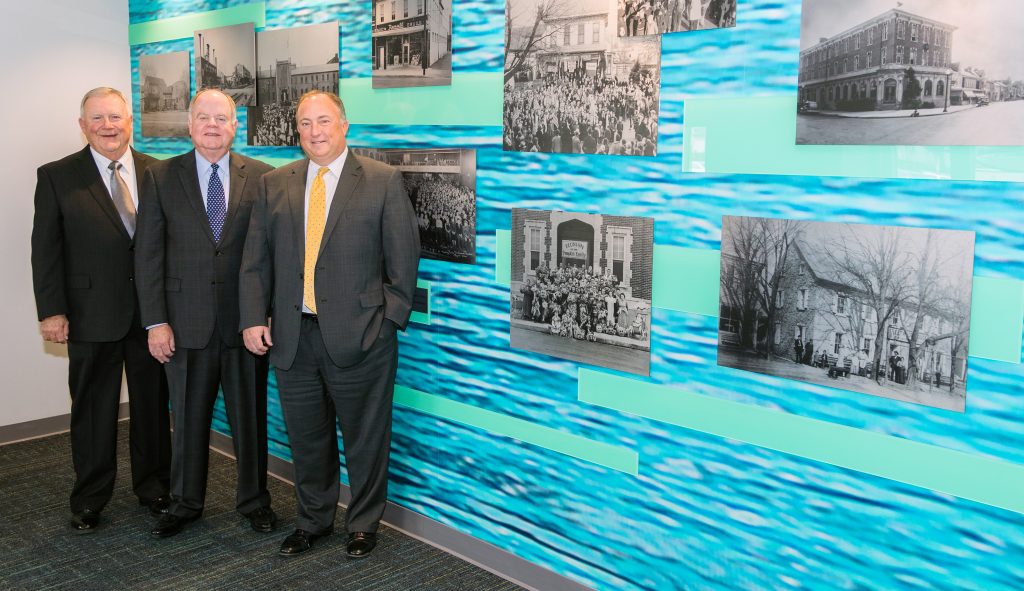
The tenures of three presidents at Fleetwood Bank in Berks County illuminate the journey that nearly all bank presidents have traveled over the past half century. As each took a star turn at the helm of Fleetwood Bank, they were forced to be both proactive and reactive. This CEO “hat trick” embodies a rich legacy, as each took a long view of the bank’s life, recalibrated expectations to fit the times, learned and taught valuable lessons, and made history one day, one year at a time.
Like the oft-quoted line about patriotism, their legacy occurred not in brief outbursts of action and emotion, but in the slow and steady dedication of a lifetime. The yardstick of their success: Fleetwood Bank is still here, 111 years since its birth, and still growing in strength, independence and community service. Their market share is destined to grow as well in the years to come as increasing numbers of customers tire of the “big banks,” who make decisions from distant offices and make them feel like a number.
All three men still serve together on the Fleetwood Board
Once home to a thriving automobile coachbuilding factory, the bank’s home community of Fleetwood Borough inspired the Cadillac “Fleetwood” name. Its hometown bank aimed for that same prestigious “Cadillac” quality.
Ron H. Frey led the bank as President and CEO from 1974 to 2005, was a 2008 PACB Hall of Fame inductee, and served as Chairman of the Board for PACB in 1984 and 1985. Richard L. Meares led Fleetwood from 2005 to 2016, captained PACB in 2010 and 2011, and was a 2017 Hall of Fame inductee. Timothy P. Snyder is now at the helm as President and CEO, having just accepted the baton more than a year ago in the bank’s long arc of history.
In a happy convergence of past, present and future, all three men still serve together on the Fleetwood board.
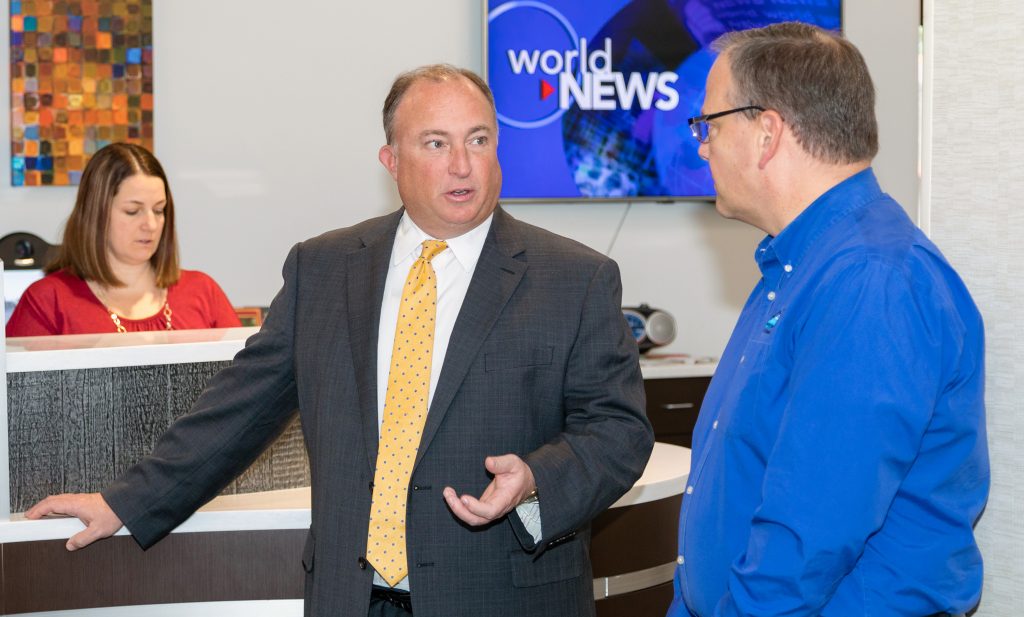
“I’ve got to believe it’s unique to have three CEOs on a seven-member board,” Snyder said. “People ask if it is difficult having two predecessors on the board, but it works well. I talk to them several times a week.” Snyder attributes their successful transition to a refreshing lack of ego and a shared passion for the bank’s success.
These three wise men have helped the bank to not only survive, but to grow by leaps and bounds. Fleetwood just opened its seventh branch in Berks County, a land long known for its Amish horse-drawn buggies, its Vanity Fair outlets, and its mashup of farms and factories. Bank branches now serve the communities of Blandon, Boyertown, Fleetwood, Kutztown, Lyons, Shoemakersville, and Wyomissing.
The bank’s headquarters, at Main and Franklin Streets, is housed in a 1920’s-era limestone and brick building that has quintessential “old bank” charm. But, defying its outward appearance, inside, the bank has recently been transformed into an ultra-modern, midnight-blue-and-white, pod-centric destination.
The evolution of the bank can be summed up in a few key years. In 1907, First National Bank in Fleetwood opened with $20,000 in deposits, at a time when Einstein was perfecting his theory of relativity and Henry Ford was perfecting a car for the masses. In 1934, the bank closed for three days and reopened under a new charter. Fast forward to 1966, when a new drive-up window was installed for the motoring public. In 1986, the first in-house computer was used, and in 1988, the first ATM. In 2000, online banking, bill pay and voice response banking were launched. In 2006, First National Bank in Fleetwood changed its name to Fleetwood Bank and became a state-chartered bank. The bank celebrated its 75th anniversary in 2009. In 2015, mobile banking was launched.
“The way we deliver services has changed, but banking is still banking”
Ronald H. Frey, President/CEO, Fleetwood Bank from 1974-2005
During those many twists and turns, each driver at the steering wheel helped make the bank the powerhouse that it is today, carrying a Five-Star superior rating from Bauer Financial Services and earning the loyalty of generations of customers and staff.
The ‘70s, ‘80s, ‘90s, and 2000s
Ronald H. Frey
When Ron H. Frey became president of Fleetwood in November, 1974, the top TV shows were “Happy Days” and “Good Times,” and for the most part, they were.
It was a far different world from 2018’s Internet-drenched and instant-everything arena.
Frey has been in banking for a remarkable 55 years, and at Fleetwood for 42.
He started his banking career at a bank in Hazleton, Luzerne County.
“The way we deliver services has changed, but banking is still banking,” Frey said. Assessments of risk, credit analyses, and the same factors bankers always evaluated still remain front and center.
But regulations are so much different today, he said.
Frey was a bank examiner for seven years before landing at Fleetwood in late 1974.
The bank was “very conservative,” he noted. They handled mostly residential mortgage real estate loans. Today, they are diving in earnest into commercial lending, as their commercial portfolio expands.
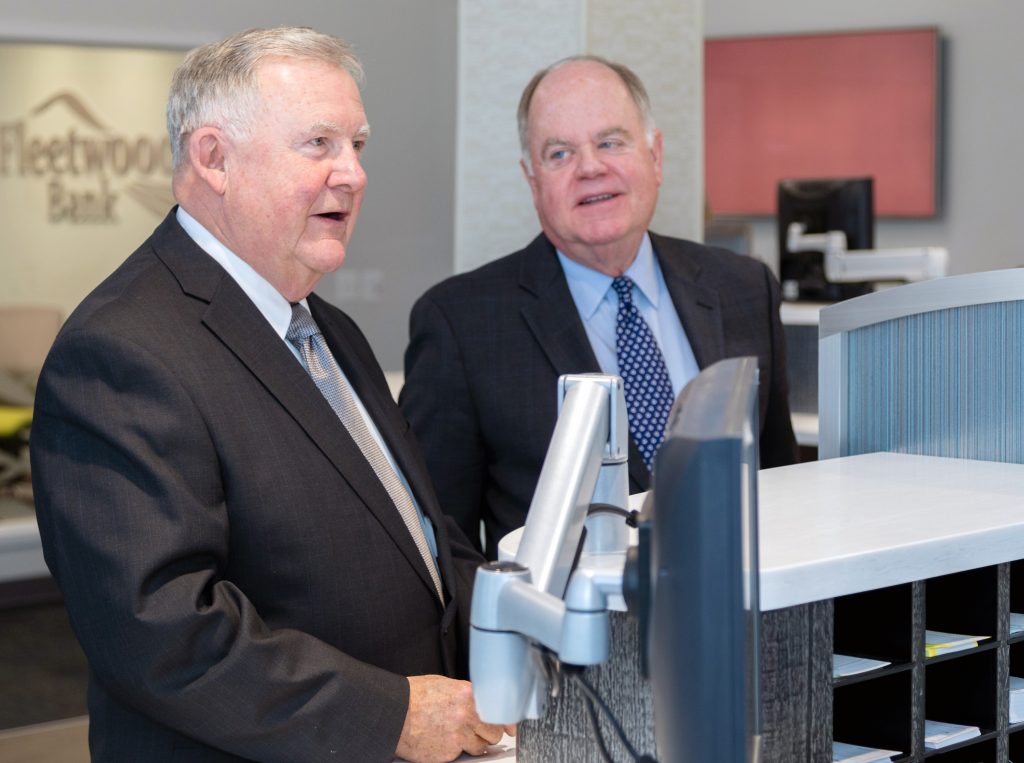
Frey recalls that few women were in the workforce in the ‘70s, save for a few secretaries. Men held the post of teller and nearly every other position in the bank, and women were mostly stay-at-home mothers.
Fleetwood was also a much smaller bank back then, with fierce competition from other banks in town. He marvels at the fact that Fleetwood is now the only remaining community bank in Berks County.
He remembers fondly all the quaint mom-and-pop shops in downtown Fleetwood in the ‘70s: the hardware store, grocery store, liquor store, hotel. Those shops are now gone, though the buildings are now occupied by many new businesses. The bank only had 7 employees in 1974.
Frey wore many hats—in fact, virtually every hat. With only 7 employees, he did lending, inventory, budgeting, and more. Every transaction was entered manually. Paper was king. Computers, ATMs, and multiple divisions were never even dreamed of.
In another major change over his impressively long tenure: traffic flow has faded dramatically. On Fridays, when Social Security checks were received, “The lobby used to be jammed.”
They had more tellers as they grew, with 10 to 12 windows open at one time. Today, only three or four people staff the main office lobby, and walk-ins are far lighter.
When he first came to Fleetwood, his chief priority was networking. As a Hazleton native, he wanted to meet everyone in Berks County. Community service became a priority. “At least three nights a week, I was doing what I call ‘gripping and grinning.’” He was frequently away from his wife weeknights as he worked late in the community, meeting new people and solidifying relationships.
His tenure followed the lengthy tenure of his predecessor, who had also served close to 30 years, from a post-war 1947 to 1974. As only the fourth or fifth president of the bank, Frey appreciates that longevity in leadership had always been part of the Fleetwood recipe.
“Fleetwood is now the only remaining community bank in Berks County”
Ron Frey, Past President/CEO, Fleetwood Bank
Even though U.S. Presidents, paperwork, technology, traffic flows and gender ratios in the workforce have changed, he is proud that the one thing that hasn’t is Fleetwood Bank’s commitment to community service. To depict the bank’s service footprint, employees made a quilt featuring many of the organizations they have helped. Every quilt block represents an organization, from Relay for Life and the rescue mission, to the American Heart Association and the Chamber of Commerce. The quilt is rotated among different offices. More than two dozen nonprofits are represented, and more than 100 organizations have been touched overall.
“We have always encouraged employees to get involved. When the community is successful, the bank is successful,” Frey said.
Another change that stands out to him is the level of documentation now required. In the old days, a mortgage could be executed in three pages. Today, the documentation is an inch or two thick.
The electronic delivery of services has also changed bank life dramatically, from his days of manual entries.
Frey is most proud of “leaving my successor a very sound institution. We grew a lot. We remained very community-oriented.”
He said each leader after him has taken the bank to the next level.
“Every decision made is based on how it will benefit the community.”
“Regulations are killing not only our industry, but our country.”
RON FREY, PAST PRESIDENT/CEO, FLEETWOOD BANK
Back when he was beginning his involvement with PACB in the 1970s, PACB’s sole focus was fighting statewide banking, which Pennsylvania ultimately approved. It was an uphill battle. The statewide venture was defeated in 1974, when he came to Fleetwood, but bill passage finally occurred in the early ‘80s.
That lifting of the Commonwealth’s prohibition on statewide banking was approved despite the decline in the number of banks in operation.
Now, the dominant issue is regulation, Frey said.
“Regulations are killing not only our industry but our country. It’s so costly anymore.”
Regulatory staff don’t add to the bottom line, he lamented, except to save the bank money in penalties and fees.
But of his tenure, in true community-banker fashion, he recalls not his own leadership style, but that of others. “I just loved it. It was a great organization, a great community, great staff.”
2000s, 2010s
Richard L. Meares
Rich Meares led the bank from 2005 to 2017, and serves with Frey and Snyder on the board. He was at the helm only a few years when the Great Recession of 2008 sent tremors through the financial services industry, and the phrase “too big to fail” became part of the American vernacular.
The biggest change he has seen in the first decades of the new millennium is technology, which debuted and spread at a dizzying pace.
When Frey passed the reins to Meares after 30-plus years, “The organization reflects the leadership,” Meares said. And for the bank, that was a very good thing.
Meares said he went through “an arduous interview process,” but once on board, he cannot recall one instance when Frey resisted an idea because “we don’t do it that way.” Frey never stood in the way of progress and was “always open to discussion.”
“I have seen many boards where the CEO can’t seem to let go, and they resist every change because it’s their baby.” Not so at Fleetwood, which was blessed with continuity on the board, but not constraints.
When Meares took the reins, Fleetwood had to upgrade its systems to compete with the tech-savvy Well Fargos and Citibanks of the world.
Other changes they wrestled with included fluctuations in capital regulations and the regulatory environment, thanks to the passage of the 2010 Wall Street Reform Act, or Dodd-Frank.
“We talk openly about how to maintain the future for the bank.”
Richard L. Meares, President/CEO, Fleetwood Bank from 2005-2016
Meares came in with admirably great expectations. His goal was to double the size of the bank every five years. But then the economy tanked, the rules changed, and regulations became a stubborn anchor that couldn’t be shaken off. The Basel rules put the brakes on asset growth, and a lackluster economy was a palpable drag on loan growth.
Fortunately, he had the “community service and the management capital to control our fate in the future.”
He sees his role as “the opportunity to be CEO due to the people who came before me.”
“Because of them, there is a future.”
Like Frey, he emphasized that there were 17 banks in Berks County 20 years ago, but now Fleetwood is the last one standing.
“That’s a really driving force for us,” Meares said. Survival is key.
He recalled the critical lesson he often shared with his sons, who are all in their mid-30s now. He finds the lessons of the “Emperor’s New Clothes” to be highly instructive. “Everyone tells you you’re right, and you start to believe it.”
Not so in his management universe. “We talk openly about how to maintain the future for the bank.” There is never a symphony of automatic agreement.
“Ron really helped keep the bank going,” he said. “Our personalities really mesh. We have the same priorities going forward.”
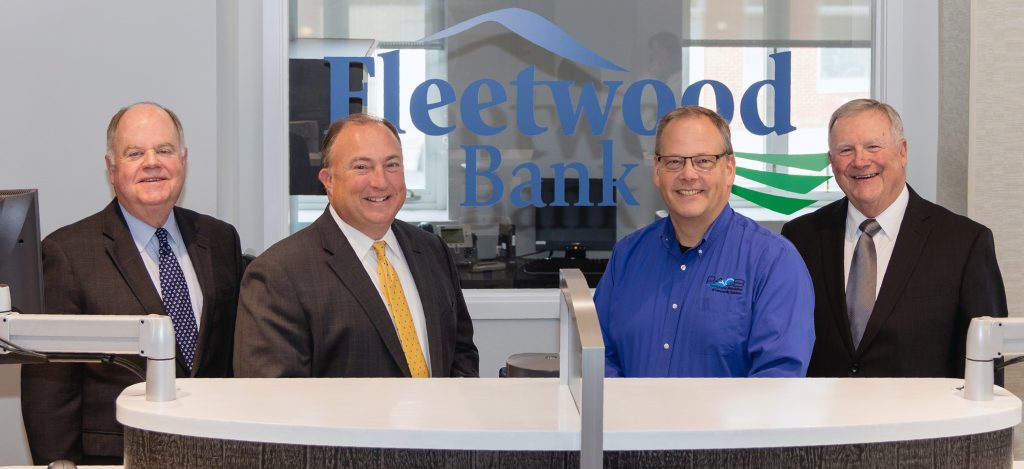
Meares started in banking in 1975. 40 years ago, he was a bank examiner, in charge of examinations for some 50 banks in Pennsylvania.
In that capacity, he was able to gain an invaluable vantage point on a host of bank leaders. “In every case the organization reflected the top leadership and their attitudes.”
“There were a few bad apples, but most were very forthright.”
He loves that there is no Monday morning quarterbacking from his predecessors.
“I just love my job.”
He recalls having to write a whopping $1.2 million check as a special assessment from the FDIC while he worked at Keystone Savings Bank, in response to the government’s actions toward the savings and loan crisis.
Remarkably, “It didn’t cripple us.”
Today, he said the best part of banking, “hands down, is the people I know and work with.”
He recalls one woman who kept saying, “I could never do that,” but with his encouragement, she became a leader.
“The people you could mentor and help grow—those are the things you remember. Those are the things that count.”
He recalls another famous line: “He who dies with the most toys wins.” He appreciates the fallacy of that thinking: “He who dies with the most toys doesn’t know what life is about. Those aren’t the things that count.”
“Any bank has a future if they believe they have a future.”
Banks must set aside ineptness and self-interest to excel and serve, he said.
His advice to others: “See the future. Believe in it. It’s yours. It sounds like a bunch of platitudes but they’re true.”
He urges bank leaders to see the light not the dark.
Community banks differ from big banks, because “We know you and you know us.”
He worked at one bank that had 383 employees. “I knew every employee, and who was there for a career and who was just there for a paycheck.”
He didn’t like the impersonality of the big banks, with their “entourage leadership style” when CEOs can’t name the employees or directly impact the businesses they serve.
See the future. Believe in it. It’s yours.
It sounds like a bunch of platitudes, but they’re true.
At Fleetwood, “I knew the customers by name.”
He left active employment in January. Since then, several of the leadership team retired, including the Chief Loan Officer, Chief Operating Officer, and Retail Bank Leader, through planned retirements.
The bank, historically blessed with uncommon stability at the top, needed to find a brand-new new talent pool.
“Tim Snyder stepped in and had to bring a whole new team with him. We’re very happy with how things are progressing.”
Tim Snyder
The baton was passed to Snyder in March of 2016. A one-year transition period allowed Meares to keep the title of CEO from March 2016 to 2017.
Before coming to Fleetwood, Snyder had worked in management with National Penn Bank, a $10 billion bank, for 17 years. Today, Fleetwood Bank has 63 employees and $230 million in assets.
Snyder was a hometown boy with deep local roots. He grew up outside Fleetwood in a neighboring town. His father and extended family were from Fleetwood, and they ran a family-owned local appliance store in town.
On a broader spectrum, one of the biggest changes he has seen in the past few years is the move to electronic forms of banking, online banking, and mobile apps that allow customers to easily snap a picture of a check to make a deposit.
But to him, the most striking change in the industry is the number of consolidations shrinking the bank-o-sphere.
He too noted that more than 20 independent banks were headquartered in the region at one time and now only Fleetwood remains. He pointed to Schuylkill County, which has no community banks anymore. The Wells Fargos and M&Ts are dominating the landscape.
How did Fleetwood survive? “It was a purposeful decision,” Snyder said.
“It was management’s and the board’s desire to remain an independent bank and their belief that we can serve the community better as an independent bank.”
Tim Snyder, President/CEO, Fleetwood Bank
“It was management’s and the board’s desire to remain an independent bank and their belief that we can serve the community better as an independent bank.”
“We have not remained independent by accident. It was a plan put in place by management and Rich and Ron at the time.”
Snyder called the three presidents’ relationship “a really unique thing.”
“I guess if we had egos it would matter, but that’s not what it’s about for us. It’s about our customers and stockholders.”
“There already was a very strong organizational foundation laid by Ron for decades, and then Rich in the past twelve years. We had a strong balance sheet and we offered the right products and services.” Their foray into e-banking has marked the natural evolution of banking’s service model, as is their presence on social media.
Capitalizing on that strong foundation, he continues to grow the commercial loan side and realign the bank’s balance sheet, for a bank that formerly did mostly residential mortgages.
Some of the industry’s changes are reflected most visibly in the bank’s headquarters itself, which has adapted to a new age of banking, Snyder said.
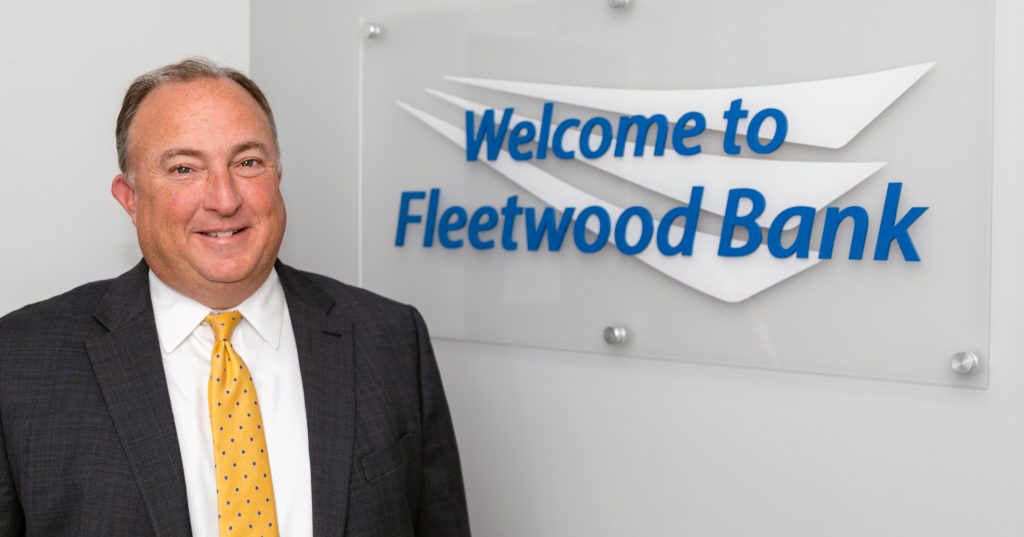
“The bank really looks to the future.” The main office is in a building that is more than 100 years old, with 12 teller windows, but only four were in use, he said. They now have pods. Two additional branches will be renovated, as well, with the pod model, computer stations, and the cultivation of “universal bankers.”
“The past is great, but the important thing is the future and making sure we do everything we can to maintain our independence.”
One part of the past he can’t ignore is the Dodd-Frank/Wall Street Reform and Consumer Protection Act passed in July 2010 under President Barack Obama, a knee-jerk, broad-brushed response to the Great Recession of 2008.
Snyder pointed to the suffocating and costly nature of that mudslide of regulations. “We spend more time and more money on things that don’t produce revenue, is the simplest way I can put it.”
Regulated by the state and the Federal Reserve, they spend an inordinate amount of time prepping for exams and meeting the regulatory burden, “which changes regularly without a real understanding of what the impact is on community banks, in my personal opinion.”
While Wells Fargo can maybe absorb the steep cost of regulations, smaller organizations are suffocating, he said.
Like Rich and Ron, Tim is proud of the bank’s community service. He relayed, they engage in “Random Acts of Kindness” and set a portion of donations aside. Employees regularly go to a nonprofit, showing up with diapers and socks at the homeless shelter, or crates and cat and dog food at an animal rescue organization. “We try not to give just cash.”
The bank did slightly over 50 visits this year—almost one a week.
“All of us go out and build relationships in the community.”
Tim Snyder, President/CEO, Fleetwood Bank
They do not seek press coverage, but their benevolence has the effect of driving people to their social media pages. “We get people to share and like, to benefit organizations in our community that need a helping hand.”
The bank supports Relay for Life and offers a Basket Bingo where hundreds of people come from the community to play bingo. Proceeds are earmarked each time to three organizations.
When Snyder arrived at Fleetwood in March of 2016, of the seven-person leadership team, they had four key positions turn over from planned retirements.
“It’s interesting to see new people come in, but it’s also a cultural shift because we are the only community bank in Berks County. We can’t elevate someone from another community bank.”
Many employees hail from the
big banks. But Fleetwood does not have large teams of people handling every task.
“If a light bulb burns out in our office, we don’t have Facilities Management come in at night to change it. You’ve got to take ownership.”
Snyder notes that of the seven on the leadership team, five are female. This was no purposeful attempt at gender diversity: “They were the best people for the job.”
Snyder also carries on Frey’s tradition of “gripping and grinning” in one form or another.
“You can spend money in marketing and sales, but if your people aren’t out in the community, it doesn’t matter. Customers do business with people they know. All of us go out and build relationships in the community.”
“The electronic stuff, the ads, the marketing–it’s all there to support us in an effort to build relationships.”
Snyder sees one more constant in the past 50 years.
PACB has been “absolutely tremendous,” Snyder said. He was always active with other professional organizations before, but he joined PACB when he joined Fleetwood.
“Their focus is dedicated to serving the needs of community banks and is a great resource, and Rich and Ron say it was a great resource for them, too. The contacts I’ve made through PACB are really great, as well as the educational facilities and tools they make available.”
“It’s an honor that everybody in this organization recognizes the importance of continuing to lead and contribute to the progress of every one of us.”
Just as PACB bridges the space between community banks, Fleetwood Bank has gracefully bridged the past, present and future, reminding the industry that, no matter the time, the place, or the president, it’s the relationships that matter.
